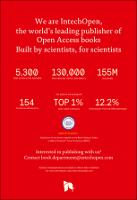Chapter 3 DoF/6 DoF Localization System for Low Computing Power Mobile Robot Platforms
| dc.contributor.author | Costa, Carlos M. | |
| dc.contributor.author | Sobreira, Héber M. | |
| dc.contributor.author | Sousa, Armando J. | |
| dc.contributor.author | Veiga, Germano | |
| dc.date.accessioned | 2021-06-02T10:07:30Z | |
| dc.date.available | 2021-06-02T10:07:30Z | |
| dc.date.issued | 2015 | |
| dc.identifier | ONIX_20210602_10.5772/61258_244 | |
| dc.identifier.uri | https://library.oapen.org/handle/20.500.12657/49130 | |
| dc.description.abstract | The combinatorial number of possible methylomes in biological time and space is astronomical. Consequently, the computational analysis of methylomes needs to cater for a variety of data, throughput and resolution. Here, we review recent advances in 2nd generation sequencing (2GS) with a focus on the different methods used for the analysis of MeDIP-seq data. The challenges and opportunities presented by the integration of methylation data with other genomic data types are discussed as is the potential impact of emerging 3rd generation sequencing (3GS) based technologies on methylation analysis. | |
| dc.language | English | |
| dc.subject.classification | bic Book Industry Communication::M Medicine::MF Pre-clinical medicine: basic sciences::MFN Medical genetics | |
| dc.subject.other | DNA methylation, methylome, immuno precipitation, analysis pipeline | |
| dc.title | Chapter 3 DoF/6 DoF Localization System for Low Computing Power Mobile Robot Platforms | |
| dc.type | chapter | |
| oapen.identifier.doi | 10.5772/61258 | |
| oapen.relation.isPublishedBy | 09f6769d-48ed-467d-b150-4cf2680656a1 | |
| oapen.relation.isFundedBy | FP7-SME-2013 | |
| oapen.grant.number | 606363 | |
| oapen.grant.acronym | CARLOS |

